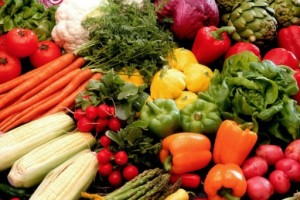Balancing Calories to Manage Weight
Balancing Calories to Manage Weight

Key Recommendations from USDA
- Prevent and/or reduce overweight and obesity through improved eating and physical activity behaviors.
- Control total calorie intake to manage body weight. For people who are overweight or obese, this will mean consuming fewer calories from foods and beverages.
- Increase physical activity and reduce time spent in sedentary behaviors.
- Maintain appropriate calorie balance during each stage of life—childhood, adolescence, adulthood, pregnancy and breastfeeding, and older age
Balancing calories to manage weight requires diligence. Achieving and sustaining appropriate body weight across the lifespan is vital to maintaining good health and quality of life. Many behavioral, environmental, and genetic factors have been shown to affect a person’s body weight. Calorie balance over time is the key to weight management. Calorie balance refers to the relationship between calories consumed from foods and beverages and calories expended in normal body functions (i.e., metabolic processes) and through physical activity. People cannot control the calories expended in metabolic processes, but they can control what they eat and drink, as well as how many calories they use in physical activity. Calories consumed must equal calories expended for a person to maintain the same body weight. Consuming more calories than expended will result in weight gain. Conversely, consuming fewer calories than expended will result in weight loss. This can be achieved over time by eating fewer calories, being more physically active or, best of all, a combination of the two.
Maintaining a healthy body weight and preventing excess weight gain throughout the lifespan are highly preferable to losing weight after weight gain. Once a person becomes obese, reducing body weight back to a healthy range requires significant effort over a span of time, even years. People who are most successful at losing weight and keeping it off do so through continued attention to calorie balance. The current high rates of overweight and obesity among virtually all subgroups of the population in the United States demonstrate that many Americans are in calorie imbalance—that is, they consume more calories than they expend. To curb the obesity epidemic and improve their health, Americans need to make significant efforts to decrease the total number of calories they consume from foods and beverages and increase calorie expenditure through physical activity. Achieving these goals will require Americansto select a healthy eating pattern that includes nutrient-dense foods and beverages they enjoy, meets nutrient requirements, and stays within calorie needs. In addition, Americans can choose from a variety of strategies to increase physical activity.
OVERWEIGHT AND OBESE: WHAT DO THEY MEAN?
Body weight status can be categorized as underweight, healthy weight, overweight, or obese. Body mass index (BMI) is a useful tool that can be used to estimate an individual’s body weight status. BMI is a measure of weight in kilograms (kg) relative to height in meters (m) squared. The terms overweight and obese describe ranges of weight that are greater than what is considered healthy for a given height, while underweight describes a weight that is lower than what is considered healthy for a given height. These categories are a guide, and some people at a healthy weight also may have weight-responsive health conditions. Because children and adolescents are growing, their BMI is plotted on growth charts for sex and age. The percentile indicates the relative position of the child’s BMI among children of the same sex and age.
Categories for children and adolescents (BMi for age Percentile range) differ, however, choices are often limited by what is available in a person’s environment, including stores, restaurants, schools, and work sites. Environment affects both sides of the calorie balance equation—it can promote over consumption of calories and discourage physical activity and calorie expenditure. The food supply has changed dramatically over the past 40 years. Foods available for consumption increased in all major food categories from 1970 to 2008. Average daily calories available per person in the marketplace increased approximately 600 calories, with the greatest increases in the availability of added fats and oils, grains, milk and milk products, and caloric sweeteners. Many portion sizes offered for sale also have increased. Research has shown that when larger portion sizes are served, people tend to consume more calories. In addition, strong evidence shows that portion size is associated with body weight, such that being served and consuming smaller portions is associated with weight loss. Studies examining the relationship between the food environment and BMI have found that communities with a larger number of fast food or quick-service restaurants tend to have higher BMIs.
Since the 1970s, the number of fast food restaurants has more than doubled. Further, the proportion of daily calorie intake from foods eaten away from home has increased, and evidence shows that children, adolescents, and adults who eat out, particularly at fast food restaurants, are at increased risk of weight gain, overweight, and obesity. The strongest association between fast food consumption and obesity is when one or more fast food meals are consumed per week. As a result of the changing food environment, individuals need to deliberately make food choices, both at home and away from home, that are nutrient dense, low in calories, and appropriate in portion size.
On the other side of the calorie balance equation, many Americans spend most of their waking hours engaged in sedentary behaviors, making it difficult for them to expend enough calories to maintain calorie balance. Many home, school, work, and community environments do not facilitate a physically active lifestyle. For example, the lack of sidewalks or parks and concerns for safety when outdoors can reduce the ability of individuals to be physically active. Also, over the past several decades, transportation and technological advances have meant that people now expend fewer calories to perform tasks of everyday life. Consequently, many people today need to make a special effort to be physically active during leisure time to meet physical activity needs. Unfortunately, levels of leisure-time physical activity are low. Approximately one-third of American adults report that they participate in leisure-time physical activity on a regular basis, one-third participate in some leisure-time physical activity, and one-third are considered inactive. Participation in physical activity also declines with age. For example, in national surveys using physical activity monitors, 42 percent of children ages 6 to 11 years participate in 60 minutes of physical activity each day, whereas only 8 percent of adolescents achieve this goal. Less than 5 percent of adults participate in 30 minutes of physical activity each day, with slightly more meeting the recommended weekly goal of at least 150 minutes.
The current dietary intake of Americans has contributed to the obesity epidemic. Many childrenand adults have a usual calorie intake that exceeds their daily needs, and they are not physically active enough to compensate for these intakes. The combination sets them on a track to gain weight. On the basis of national survey data, the average calorie intake among women and men older than age 19 years are estimated to be 1,785 and 2,640 calories per day, respectively. While these estimates do not appear to be excessive, the numbers are difficult to interpret because survey respondents, especially individuals who are overweight or obese, often underreport dietary intake. Achieving these goals will require Americans to select a healthy eating pattern that includes nutrient-dense foods and beverages they enjoy, meets nutrient requirements, and stays within calorie needs. In addition, Americans can choose from a variety of strategies to increase physical activity.
Key Takeaways
Prevent and/or reduce overweight and obesity through improved eating and physical activity behaviors. Control total calorie intake to manage body weight. For people who are overweightor obese, this will mean consuming fewer calories from foods and beverages. Increase physical activity and reduce time spent in sedentary behaviors. Maintain appropriate calorie balance during each stage of life—childhood, adolescence, adulthood, pregnancy and breastfeeding,
and older age

